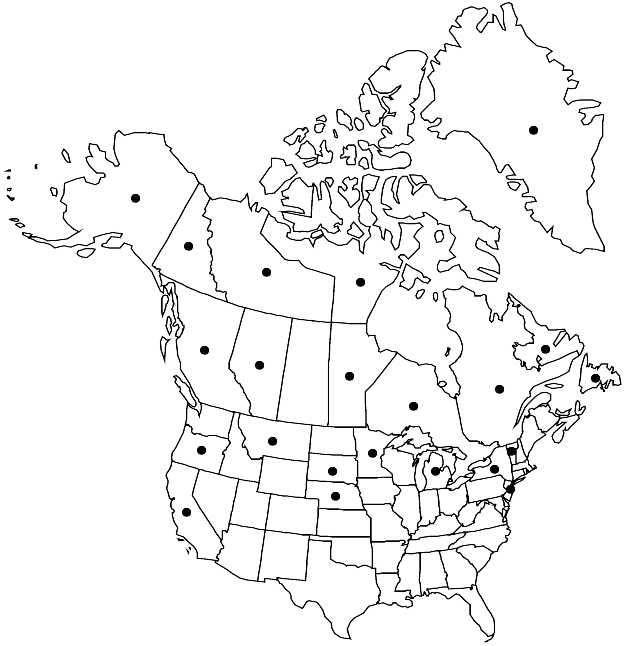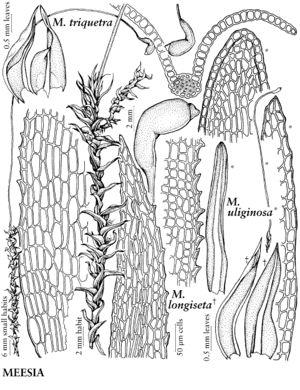Meesia triquetra
Nova Acta Regiae Soc. Sci. Upsal. 12: 357. 1844.
Plants 0.1–1.2 cm. Stem-leaves contorted when dry, widespreading and distinctly 3-ranked when moist, ovatelanceolate, 1.5–4 mm; base decurrent; margins plane to weakly reflexed proximally, serrulate distally; apex acute; costa narrow, ending in or just before apex; inner laminal cells smaller, walls thicker than marginal cells. Sexual condition dioicous. Seta 3–10 cm. Capsule 3–4.5 mm. Spores 33–38 µm.
Habitat: Rich fens, arctic and boreal areas
Elevation: moderate to high elevations
Distribution

Greenland, Alta., B.C., Man., Nfld. and Labr., N.W.T., Nunavut, Ont., Que., Yukon, Alaska, Calif., Mich., Minn., Mont., Nebr., N.J., N.Y., Oreg., S.Dak., Vt., n Eurasia
Discussion
Meesia triquetra is frequent where appropriate habitat is available, and disjunct in a few locations farther south. The species is usually easily distinguished by its three-ranked, widely spreading leaves that have serrulate margins. The sexual condition is dioicous.
Selected References
None.
